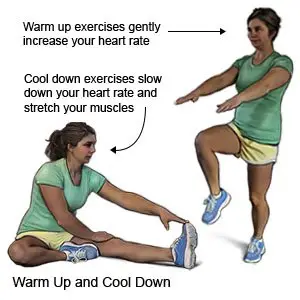What is spondylolisthesis?
Spondylolisthesis is a condition that happens when a bone in your spine moves out of place. The bones often move slowly over time, but they may move suddenly. Spondylolisthesis can occur anywhere in the spine, but it most commonly occurs in the lower back.
What causes spondylolisthesis?
Your risk for spondylolisthesis increases as you age. The joints and ligaments that hold your spine together become weak. This increases the risk that the bones in your spine will move out of place. The following are other causes of spondylolisthesis:
- A birth defect
- A break in part of your spine
- A tumor near or on your spine
- An infection in or near your spine
- Too much stress on the spine from certain activities such as weightlifting or gymnastics
What are the signs and symptoms of spondylolisthesis?
Your symptoms may be mild to severe. You may have any of the following:
- Pain in your lower back or legs
- Stiffness in your back
- Tight hamstring muscles
- Weakness, numbness, or tingling in your legs
How is spondylolisthesis diagnosed?
Your healthcare provider will examine you and ask about your symptoms. Your provider may move your legs and ask if you have pain. You may need an x-ray, CT scan, or MRI of your spine. These tests can check for a broken bone or bone that has moved out of place. You may be given contrast liquid to help the spine show up better in the pictures. Tell the healthcare provider if you have ever had an allergic reaction to contrast liquid. Do not enter the MRI room with anything metal. Metal can cause serious injury. Tell the healthcare provider if you have any metal in or on your body.
How is spondylolisthesis treated?
- Medicines can help decrease pain or swelling. Some medicines may be injected into your back.
- A back brace will keep your back from moving and decrease pain.
- Physical therapy may be needed. A physical therapist teaches you exercises to help improve movement and strength, and to decrease pain.
- Surgery may be needed if other treatments do not work or your symptoms get worse. Surgery may be done to join the bones in your spine and keep them from moving. This is called a spinal fusion. Surgery may also be done to decrease pressure on the nerves in your spine. This is called a laminectomy.
Treatment options
The following list of medications are in some way related to or used in the treatment of this condition.
- gabapentin
- Advil
- Flanax Pain Reliever
- Aleve
- Proprinal
View more treatment options
What can I do to manage my symptoms?
- Rest as directed. Do not lift anything heavier than 5 pounds. Do not bend or twist at the waist. Do not play sports or do vigorous activities. Ask your healthcare provider when you can return to your usual activities.
- Apply ice on your back for 15 to 20 minutes every hour or as directed. Use an ice pack, or put crushed ice in a plastic bag. Cover it with a towel before you apply it to your back. Ice helps prevent tissue damage and decreases swelling and pain.
- Reach or maintain a healthy weight. Extra weight can increase pressure on your spine. This can make your symptoms worse. Ask your healthcare provider how much you should weigh. Your provider can help you create a healthy weight loss plan if you are overweight.
- Ask your healthcare provider if alternative therapies are right for you. Examples include yoga and acupuncture. Yoga may increase your strength and flexibility. Acupuncture may help decrease your pain.
- Stretch as directed when you return to your exercise program. Always warm up your muscles and stretch before you exercise. Do cool down exercises and stretches when you are finished. This will keep your muscles loose and decrease stress on your spine.

When should I seek immediate care?
- You have sudden numbness or weakness in your legs.
- You cannot walk or move your legs.
- Your pain suddenly gets worse.
- You have numbness in your genital area or trouble controlling your urine or bowel movements.
When should I contact my healthcare provider?
- Your symptoms do not get better with treatment.
- You have a fever.
- You have pain in your thighs or buttocks.
- You have questions or concerns about your condition or care.
Care Agreement
You have the right to help plan your care. Learn about your health condition and how it may be treated. Discuss treatment options with your healthcare providers to decide what care you want to receive. You always have the right to refuse treatment. The above information is an educational aid only. It is not intended as medical advice for individual conditions or treatments. Talk to your doctor, nurse or pharmacist before following any medical regimen to see if it is safe and effective for you.© Copyright Merative 2023 Information is for End User's use only and may not be sold, redistributed or otherwise used for commercial purposes.




